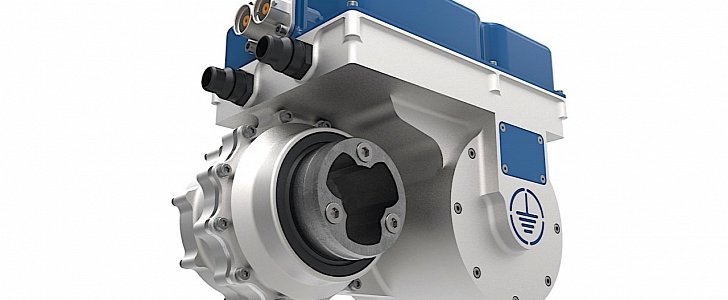Despite the fact that electric vehicles have finally taken hold, there are still a lot of advancements to be made before people begin buying them as casually as they now do ICE-powered cars. Most of the improvements are needed in the battery and charging departments, but we’re sure a better electric motor would be just as welcomed.
As carmakers race to come up with even lighter parts for their electric cars, having a motor that weighs under 10 kg and is capable of developing close to 300 hp would be godsent. Soon, such a dream might just become a reality.
As the eyes of the world are pinned to the not-Geneva Motor Show presently taking place online, two British companies announced they are working on exactly such a project. The two are Equipmake and HiETA, and their jointly-developed electric motor is called the Ampere.
Taking advantage of advancements made in 3D-printing technology, the Ampere is not milled, but 3D-printed in metal, and that both significantly lowers the weight of the final product, and eliminates the need for multi-part assembly.
“We typically reduce the size of thermal management components by five times compared with conventional techniques which will allow next generation heat transfer features to be integrated into the rotor, stator and electronics cooling,” said about the manufacturing process Andy Jones, Innovation Programme Manager at HiETA.
“In addition, the freedoms of additive manufacture will be used to optimize structural performance. We are integrating these benefits with Equipmake’s advanced electric motor design from the ground up and are looking forward to manufacture and test in the near future.”
According to the two companies, the Ampere will weigh under 10 kg (22 pounds), and will develop a peak power of 295 hp, which should translate into a power density of 27 hp per kq. That is significantly higher than what today’s motors are capable of.
The first working prototypes of the Ampere should be ready for testing in about a year, the two companies say. More details can be found in the press release section below.
As the eyes of the world are pinned to the not-Geneva Motor Show presently taking place online, two British companies announced they are working on exactly such a project. The two are Equipmake and HiETA, and their jointly-developed electric motor is called the Ampere.
Taking advantage of advancements made in 3D-printing technology, the Ampere is not milled, but 3D-printed in metal, and that both significantly lowers the weight of the final product, and eliminates the need for multi-part assembly.
“We typically reduce the size of thermal management components by five times compared with conventional techniques which will allow next generation heat transfer features to be integrated into the rotor, stator and electronics cooling,” said about the manufacturing process Andy Jones, Innovation Programme Manager at HiETA.
“In addition, the freedoms of additive manufacture will be used to optimize structural performance. We are integrating these benefits with Equipmake’s advanced electric motor design from the ground up and are looking forward to manufacture and test in the near future.”
According to the two companies, the Ampere will weigh under 10 kg (22 pounds), and will develop a peak power of 295 hp, which should translate into a power density of 27 hp per kq. That is significantly higher than what today’s motors are capable of.
The first working prototypes of the Ampere should be ready for testing in about a year, the two companies say. More details can be found in the press release section below.

